The Modi led NDA government has increased the excise duty on petrol & diesel multiple times during the last 6 years. Though there has been a substantial fall in the global crude oil price, the same benefit has not been passed onto the customers. One major reason cited for not reducing the prices is the burden of oil bonds. What is the pending burden of oil bonds? How much has the current government repaid? Here are the details.
On 13 March 2020, the Government of India increased the excise duty on petrol and diesel by ₹3 per litre. The hike in special excise duty on petrol and diesel was by ₹ 2, taking the total to ₹ 10 per litre for petrol and ₹ 4 per litre for diesel. Additionally, the road cess on both petrol and diesel was increased by ₹ 1 each from ₹ 9 per litre, taking the total to ₹ 10 per litre for both petrol and diesel. While this move will help the government garner additional revenue in these bleak times, this increase comes at a time when the global crude oil prices are witnessing a sharp decline.
The opposition led by the Congress criticized the government over this hike and alleged that the government was not transferring the benefits of fall in crude oil price to the people. Rahul Gandhi took on to twitter to criticize the finance minister for the hike.
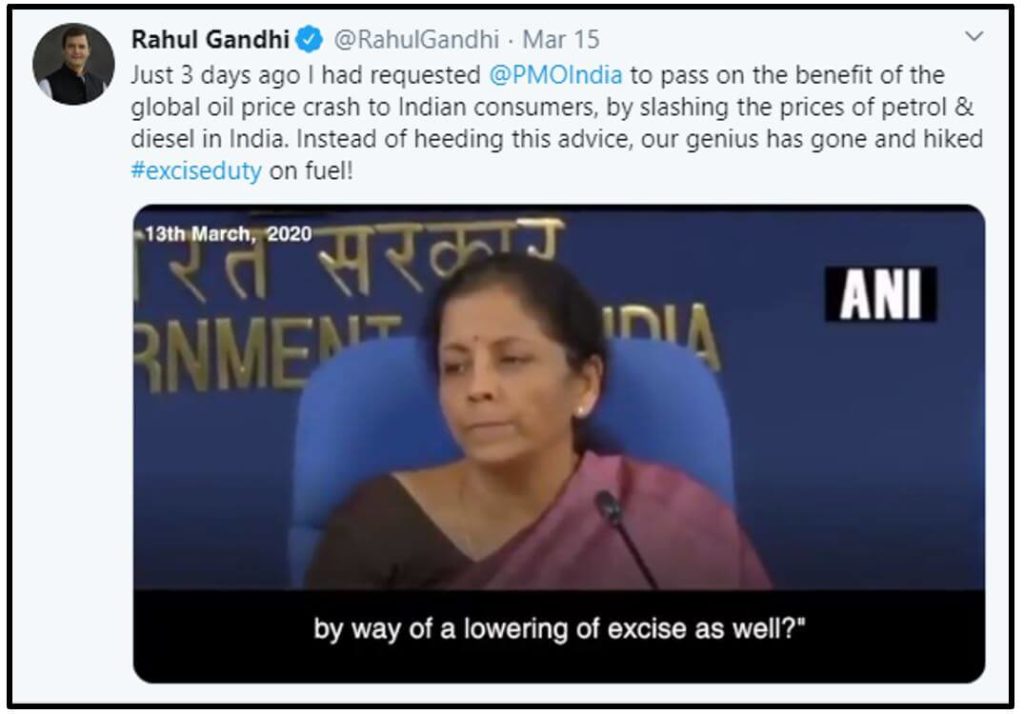
During the recent budget session of parliament, the government passed the Finance Bill which gives the government the power to increase additional excise duty up to ₹18 per litre on petrol and up to ₹ 12 per litre for diesel. Since the NDA came to power, the excise duty on petrol & diesel has been increased multiple times.
One of the major reasons cited earlier by the Bharatiya Janata Party for not reducing the taxes is the burden of repayment of oil bonds that were issued during the Congress led UPA’s term.
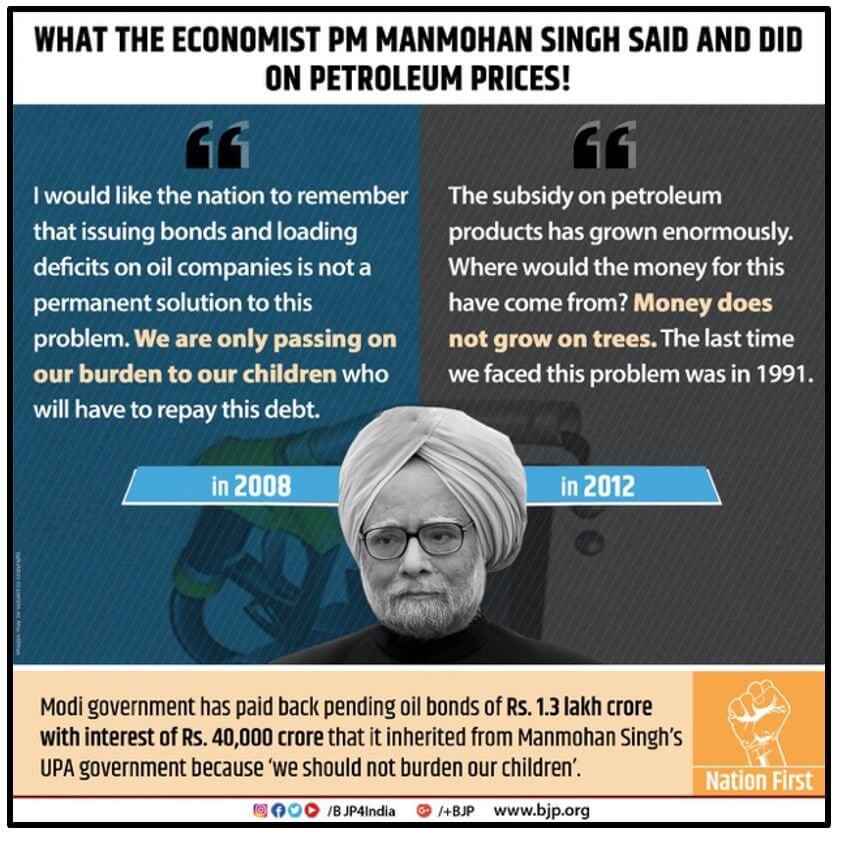
There have been instances during the previous term of the NDA Government where claims have been made by those in the government that they repaid more than ₹ 1.5 Lakh crore worth oil bonds which were issued during the Manmohan Singh led UPA government. Even in the Bharatiya Janata Party’s twitter handle, an infographic claiming that the NDA government repaid pending oil bonds worth ₹ 1.3 Lakh crore and an interest of ₹ 40,000 crores was posted in September 2018.
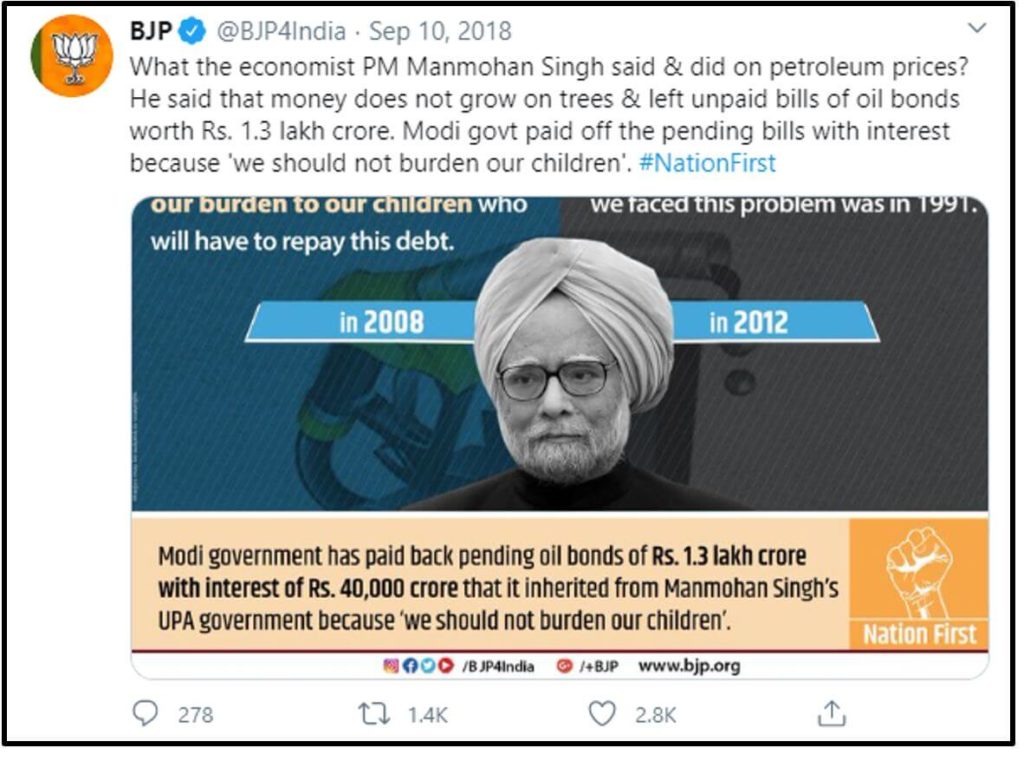
Factly had earlier done a fact check on this claim using data available in the budget documents. It was found that the NDA Government had repaid oil bonds worth ₹ 3,500 crores only. The Petroleum Planning and Analysis Cell (PPAC), an organization attached to Ministry of Petroleum and Natural Gas was formed replacing Oil Coordination Committee in 2012. PPAC had also confirmed in September 2018 that the government had indeed repaid only ₹ 3,500 crore worth oil bonds. Even in Rajya Sabha, the government stated the same as a response to a question.
What are oil bonds? What is its purpose?
During the UPA and even during the Vajpayee government, the governments issued oil bonds instead of paying Oil Marketing Companies (OMCs) for subsidies extended on petrol, diesel and other oil products. These oil bonds were issued as compensation to these OMCs which are like government securities which are long-dated. The maturity period can extend for a period of 10 to 20 years. In short, in order to compensate for the losses incurred when the prices of petrol and diesel are regulated, oil bonds were issued by the government. For example, the following is a notification on oil bonds that were issued by the UPA government in 2008.
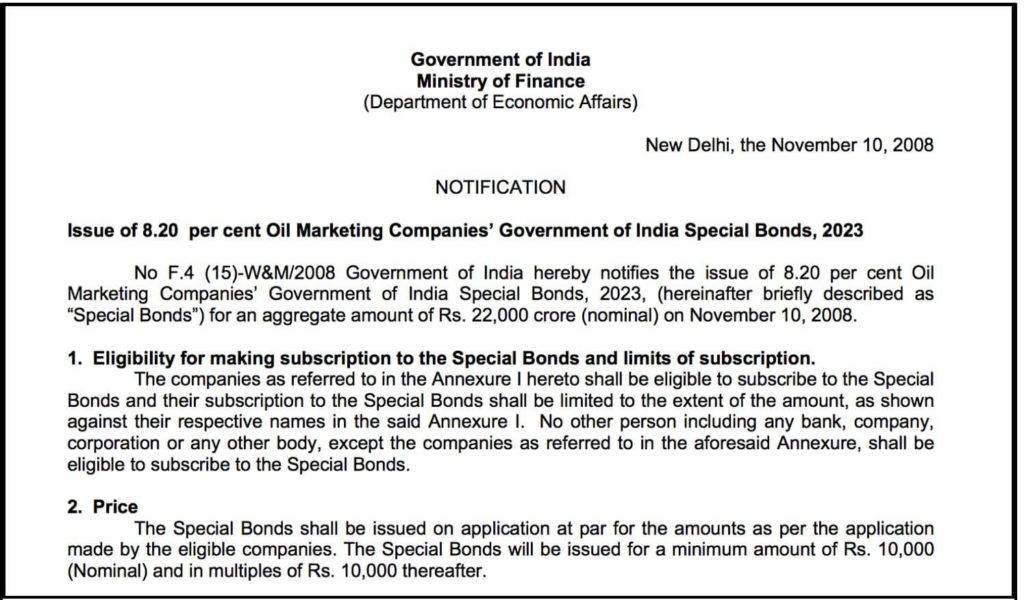
Who issued oil bonds?
Oil bonds were issued by all the governments until about 2010. Not only the UPA government but also the Atal Bihari Vajpayee led NDA government had also issued oil bonds. This is evident from the budget speech for 2002-03 of the then finance minister, Yashwant Sinha. Sinha had mentioned that the government would issue oil bonds.
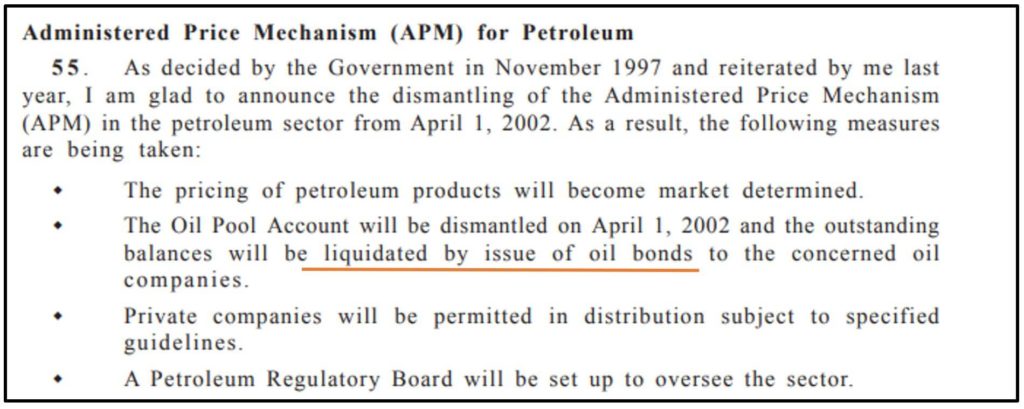
What is the worth of oil bonds pending?
The details regarding pending oil bonds and the amount of interest to be paid on the oil bonds are listed in the budget documents. In the 2014-15 receipt budget, as per annexure 6E titled ‘Special Securities Issued to Oil Marketing Companies In Lieu Of Cash Subsidy’, pending liabilities related to oil bonds were ₹ 1,34,423 crores. That is, an amount of ₹ 1,34,423 crores were the total value of pending oil bonds by the end of 2013-14.
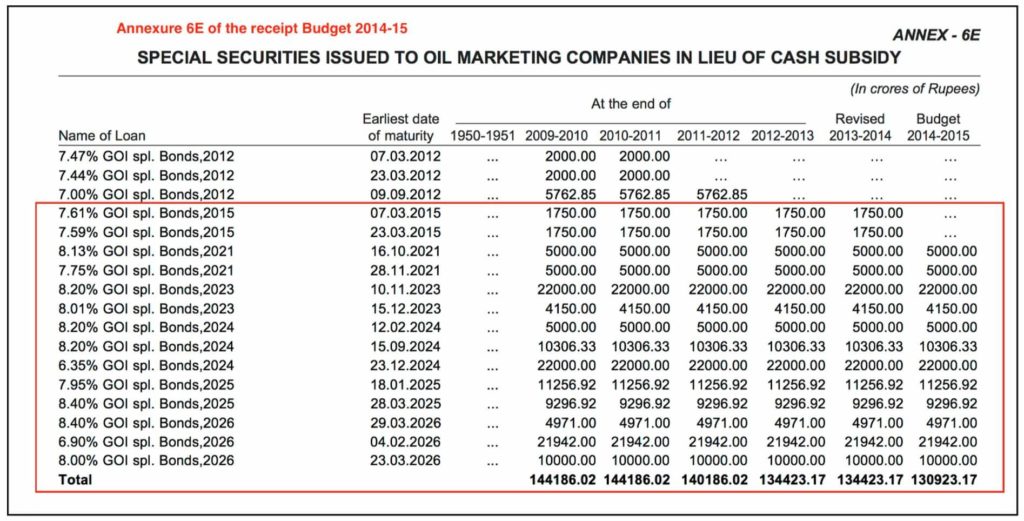
How much has the NDA government repaid?
The NDA government came into power in May 2014. Between 2014-19, during the NDA regime, only two sets of bonds were due for maturity and these matured in 2015 whose total value was ₹ 3500 crores. This was clarified by the government in an answer in Rajya Sabha and also by the PPAC. Annexure 2E of receipt budget 2019-20 showed the same liabilities. When the NDA government took over, the pending liabilities stood at ₹ 1,34,423 crores and by 2018-19, the same stood at ₹ 1,30,923 crores. This clearly indicates that the NDA government repaid only ₹ 3,500 crores.
Between 2019-24, in the current & second term of the Modi led NDA, oil bonds worth a total of ₹ 41,150 crores are due for maturity as per the budget document. Till date, none of the remaining oil bonds have matured. Two sets of oil bonds together worth ₹ 10,000 crores are due for maturity in 2021.

How about the interest on oil bonds?
The Government of India’s payment of interests have been listed in the document, ‘Interest Payments’ in the demand of grants of the Ministry of Finance under the expenditure budget. This document lists all the interest payments made by the government including the interest on special bonds to oil companies. Both UPA and NDA governments have been paying interest on oil bonds for the last twenty years.
Trend in the last twenty years
In the subsequent graph, the interest paid by the different governments in the last 23 years in lieu of oil bonds has been represented. It is observed that, under UPA-I, there is a substantial increase in the interest liability because of the issuance of multiple oil bonds. Under UPA-II between 2009-14, a total of ₹ 53,136 crores have been paid as interest on oil bonds. The previous NDA government paid a total of ₹ 50,216 crores as interest in the 2014-19 period. The revised estimate for 2019-20 is ₹ 9989.96 crores and the same amount has been budgeted for interest payment in 2020-21.

Since 2015-16, there has been no change in the amount paid as interest on oil bonds as no bonds were due for maturity. This also substantiates the fact that there has been no repayment during this period, the last payment was in 2015. Both UPA-II and NDA-I have made an interest payment of more than ₹ 50,000 crores during their five-year tenures. The government also confirmed in the Rajya Sabha that there are around ₹ 1.3 Lakh crores worth oil bonds to be repaid in the coming years starting 2021.
Featured Image: Worth of Oil Bonds pending for repayment



2 Comments
It is not clear what you are attempting to say.
1) Is it your case that NDA govt should not increase excise duty and mop up extra revenue and allow the windfall due to decrease in price to be enjoyed by middle men (nobody is ever going to pass it on to the consumer)
2) Do you expect NDA govt to prepay the oil bonds when govt is struggling to raise every pie in these difficult times?
If the excise duty is reduced by the center and the VAT by the states, it will definitely be passed onto the customers. Secondly, it is our case to inform facts because a few BJP leaders and ministers even mentioned that the oil bonds were completely repaid.